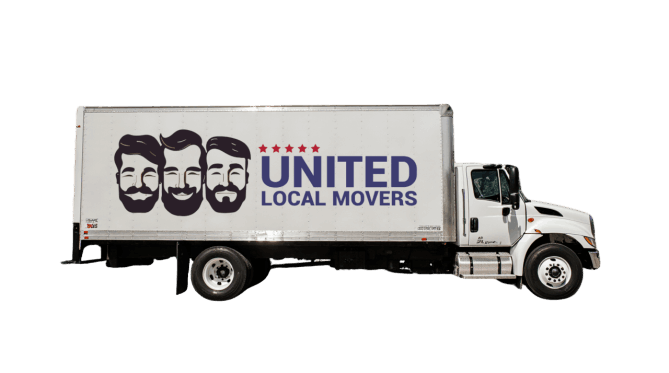Planning a move from San Francisco to Sacramento means trading one California personality for another. San Francisco often feels compact, tech-forward, and walkable with cooler microclimates, while Sacramento stretches into sunshine, larger homes, and a culture that rewards creativity and outdoor time. Families make this jump for space, budget, career changes, or to be closer to loved ones. This guide keeps it human and practical: what the move tends to cost, how estimates are built, how long the door‑to‑door journey usually takes, and what small logistics prevent big surprises. We’ll also compare cost of living, housing, healthcare access, neighborhood safety, and commuting patterns so you can model your week, not just moving day. Plan your timeline around building rules, elevator reservations, and realistic loading windows; label boxes clearly by room and priority; keep a first-night kit with bedding, toiletries, and chargers; and confirm parking or permits for the moving truck at both addresses to avoid last‑minute delays. Plan your timeline around building rules, elevator reservations, and realistic loading windows; label boxes clearly by room and priority; keep a first-night kit with bedding, toiletries, and chargers; and confirm parking or permits for the moving truck at both addresses to avoid last‑minute delays.
Estimated Moving Costs
Price depends on shipment size, access at both addresses, and extras like packing or storage. Studios and one‑bedrooms commonly fall in the $1,200–$2,000 range when timing is flexible and elevator access is smooth. Two‑bedroom apartments often land around $2,000–$3,500, while three‑bedroom homes run $3,500–$5,500 and larger households can exceed $5,500 when specialty items or long carries add labor hours. Summer weekends are premium windows because trucks, crews, and elevators are in short supply, so mid‑month midweek dates are your friend. A straight, transparent estimate helps you budget with confidence. Plan your timeline around building rules, elevator reservations, and realistic loading windows; label boxes clearly by room and priority; keep a first-night kit with bedding, toiletries, and chargers; and confirm parking or permits for the moving truck at both addresses to avoid last‑minute delays. Plan your timeline around building rules, elevator reservations, and realistic loading windows; label boxes clearly by room and priority; keep a first-night kit with bedding, toiletries, and chargers; and confirm parking or permits for the moving truck at both addresses to avoid last‑minute delays.
| Home Size | Typical Range | Notes |
|---|---|---|
| Studio / 1-BR | $1,200 – $2,000 | Best rates midweek; light packing |
| 2-Bedroom | $2,000 – $3,500 | Elevator bookings reduce delays |
| 3-Bedroom House | $3,500 – $5,500 | Disassembly and access shape time |
| 4-Bedroom+ | $5,500 – $8,000+ | Special items and storage add cost |
How Moving Estimates Are Calculated
Good quotes mirror real conditions: distance and route windows; the volume or weight of your shipment; the number of movers needed to load, carry, and secure items; and building logistics like stairs, elevator reservations, loading docks, and curb access. Add‑ons—partial or full packing, fragile crating, TV dismounting, furniture disassembly, and short‑term storage—add cost but reduce risk and chaos on the day. Precise inventories, photos of tricky corners, and confirmed parking or permits let the plan match reality so your final invoice stays close to the estimate. Reputable movers also outline valuation coverage options in plain language. Plan your timeline around building rules, elevator reservations, and realistic loading windows; label boxes clearly by room and priority; keep a first-night kit with bedding, toiletries, and chargers; and confirm parking or permits for the moving truck at both addresses to avoid last‑minute delays. Plan your timeline around building rules, elevator reservations, and realistic loading windows; label boxes clearly by room and priority; keep a first-night kit with bedding, toiletries, and chargers; and confirm parking or permits for the moving truck at both addresses to avoid last‑minute delays.

Ready to get moved? Get a FREE quote now
Book your move easily and stress-free!
How Long Will the Move Take?
Think in phases: packing and loading (often five to ten hours depending on floor level and elevator timing), transit along I‑5 or 101 (eight to ten hours in a truck with rest breaks), and unloading with basic setup (four to eight hours). Smaller apartments can be done in a long single day if both buildings allow flexible windows, while larger households commonly split across two days for safety and predictability. If you add packing services, plan an extra prep day. Align keys, elevator windows, and parking on both ends so momentum never stalls. Plan your timeline around building rules, elevator reservations, and realistic loading windows; label boxes clearly by room and priority; keep a first-night kit with bedding, toiletries, and chargers; and confirm parking or permits for the moving truck at both addresses to avoid last‑minute delays. Plan your timeline around building rules, elevator reservations, and realistic loading windows; label boxes clearly by room and priority; keep a first-night kit with bedding, toiletries, and chargers; and confirm parking or permits for the moving truck at both addresses to avoid last‑minute delays.
| Phase | Typical Window | Tips |
|---|---|---|
| Packing & Loading | 5–10 hours | Stage boxes near exits |
| Transit | 8–10 hours | Account for rest and traffic |
| Unloading & Setup | 4–8 hours | Label by room; keep essentials handy |
Key Things to Consider When Moving
Permits for curb space, elevator bookings, and HOA or building rules drive timing. Photograph the path from curb to door at both addresses and share measurements for awkward stair turns or low ceilings. Stage boxes near exits, protect floors, and keep an essentials bin for the first forty‑eight hours: bedding, towels, coffee gear, toiletries, meds, pet supplies, and chargers. If heat is likely at the destination, plan shaded staging for delicate items and avoid leaving electronics in direct sun. Insurance and valuation coverage deserve five minutes of attention before moving day so everyone knows how items are protected. Plan your timeline around building rules, elevator reservations, and realistic loading windows; label boxes clearly by room and priority; keep a first-night kit with bedding, toiletries, and chargers; and confirm parking or permits for the moving truck at both addresses to avoid last‑minute delays. Plan your timeline around building rules, elevator reservations, and realistic loading windows; label boxes clearly by room and priority; keep a first-night kit with bedding, toiletries, and chargers; and confirm parking or permits for the moving truck at both addresses to avoid last‑minute delays.
Cost of Living: What’s Different
Housing drives most of the math. Rents and purchase prices vary by micro‑location, but many families find they gain square footage or outdoor space after this move. Groceries and dining seldom swing as dramatically as housing, while transportation budgets adjust if you shift from transit‑first habits to a more car‑centered routine. Use a simple spreadsheet: current rent or mortgage, target neighborhood comps, utilities, commuting costs, insurance, and a modest buffer for the first three months. Plan your timeline around building rules, elevator reservations, and realistic loading windows; label boxes clearly by room and priority; keep a first-night kit with bedding, toiletries, and chargers; and confirm parking or permits for the moving truck at both addresses to avoid last‑minute delays. Plan your timeline around building rules, elevator reservations, and realistic loading windows; label boxes clearly by room and priority; keep a first-night kit with bedding, toiletries, and chargers; and confirm parking or permits for the moving truck at both addresses to avoid last‑minute delays. Plan your timeline around building rules, elevator reservations, and realistic loading windows; label boxes clearly by room and priority; keep a first-night kit with bedding, toiletries, and chargers; and confirm parking or permits for the moving truck at both addresses to avoid last‑minute delays.
| Category | Origin | Destination |
|---|---|---|
| Average Rent (1-BR) | ~$3,100 | varies by neighborhood |
| Median Home Price | ~$1.3M | often lower than origin |
| Utilities (Monthly) | ~$180 | ~$160–$190 |
| Restaurant Meal | ~$25 | ~$18–$22 |
| Transit Pass | ~$86 | varies by system |
Housing: Renting & Buying
Tour with a tape measure and a checklist. For renters, compare storage, parking reality, natural light, AC, and sound insulation—small quality‑of‑life details that disappear in listing photos. For buyers, weigh HOA dues, potential retrofits, and insurance premiums against list price to get a true monthly number. If you work from home, prioritize a real desk wall, outlets, and network drop locations so your office is productive on day one. Plan your timeline around building rules, elevator reservations, and realistic loading windows; label boxes clearly by room and priority; keep a first-night kit with bedding, toiletries, and chargers; and confirm parking or permits for the moving truck at both addresses to avoid last‑minute delays. Plan your timeline around building rules, elevator reservations, and realistic loading windows; label boxes clearly by room and priority; keep a first-night kit with bedding, toiletries, and chargers; and confirm parking or permits for the moving truck at both addresses to avoid last‑minute delays. Plan your timeline around building rules, elevator reservations, and realistic loading windows; label boxes clearly by room and priority; keep a first-night kit with bedding, toiletries, and chargers; and confirm parking or permits for the moving truck at both addresses to avoid last‑minute delays.
Healthcare: Access & Quality
Both metros offer strong care; the destination often provides broader coverage across more neighborhoods. To avoid gaps, transfer prescriptions in advance, export medical records, and line up in‑network primary and urgent care near your new address. Parents should check clinic hours and parking first—weekday logistics matter more than brand names when schedules are tight. If open enrollment is near, review network differences even within the same insurer. Plan your timeline around building rules, elevator reservations, and realistic loading windows; label boxes clearly by room and priority; keep a first-night kit with bedding, toiletries, and chargers; and confirm parking or permits for the moving truck at both addresses to avoid last‑minute delays. Plan your timeline around building rules, elevator reservations, and realistic loading windows; label boxes clearly by room and priority; keep a first-night kit with bedding, toiletries, and chargers; and confirm parking or permits for the moving truck at both addresses to avoid last‑minute delays. Plan your timeline around building rules, elevator reservations, and realistic loading windows; label boxes clearly by room and priority; keep a first-night kit with bedding, toiletries, and chargers; and confirm parking or permits for the moving truck at both addresses to avoid last‑minute delays.

Ready to get moved? Get a FREE quote now
Ready to get moved? Get a FREE quote now
Crime & Safety
Safety is hyper‑local. Shortlist a few neighborhoods that fit your budget and commute, then check current incident maps, walk blocks after dark, and ask buildings about lighting, access control, package rooms, and garage security. If you own bikes, camera gear, or instruments, plan indoor storage from day one. Good habits and a well‑chosen micro‑location usually matter more than citywide narratives. Plan your timeline around building rules, elevator reservations, and realistic loading windows; label boxes clearly by room and priority; keep a first-night kit with bedding, toiletries, and chargers; and confirm parking or permits for the moving truck at both addresses to avoid last‑minute delays. Plan your timeline around building rules, elevator reservations, and realistic loading windows; label boxes clearly by room and priority; keep a first-night kit with bedding, toiletries, and chargers; and confirm parking or permits for the moving truck at both addresses to avoid last‑minute delays. Plan your timeline around building rules, elevator reservations, and realistic loading windows; label boxes clearly by room and priority; keep a first-night kit with bedding, toiletries, and chargers; and confirm parking or permits for the moving truck at both addresses to avoid last‑minute delays.
Transportation & Commuting
If you hope to lean on transit, start your home search near reliable rail or frequent bus corridors and test the full door‑to‑door commute at peak hours before you sign anything. If driving is the plan, learn street‑sweeping schedules, permit rules, and realistic parking near your building. On moving day, landing after the morning rush can save an hour of crew time and your nerves. Plan your timeline around building rules, elevator reservations, and realistic loading windows; label boxes clearly by room and priority; keep a first-night kit with bedding, toiletries, and chargers; and confirm parking or permits for the moving truck at both addresses to avoid last‑minute delays. Plan your timeline around building rules, elevator reservations, and realistic loading windows; label boxes clearly by room and priority; keep a first-night kit with bedding, toiletries, and chargers; and confirm parking or permits for the moving truck at both addresses to avoid last‑minute delays. Plan your timeline around building rules, elevator reservations, and realistic loading windows; label boxes clearly by room and priority; keep a first-night kit with bedding, toiletries, and chargers; and confirm parking or permits for the moving truck at both addresses to avoid last‑minute delays.
How United Local Movers Can Help
United Local Movers runs this corridor constantly, bringing experienced crews, proper protection for floors and doorways, and a calm, organized pace that keeps your day predictable. We offer partial and full packing, careful handling for fragile pieces, and clear, line‑item estimates so you see how distance, labor hours, and materials create the number. If you’re optimizing budget, we’ll coach you on prep that reduces crew time; if you’re optimizing convenience, we’ll handle the details so you can walk into a livable home the same evening. Learn more at United Local Movers. Plan your timeline around building rules, elevator reservations, and realistic loading windows; label boxes clearly by room and priority; keep a first-night kit with bedding, toiletries, and chargers; and confirm parking or permits for the moving truck at both addresses to avoid last‑minute delays. Plan your timeline around building rules, elevator reservations, and realistic loading windows; label boxes clearly by room and priority; keep a first-night kit with bedding, toiletries, and chargers; and confirm parking or permits for the moving truck at both addresses to avoid last‑minute delays.
Conclusion
A well‑planned move replaces uncertainty with simple steps: confirm building logistics, align schedules, pack smart, and work with a team that treats your home with care. Do that and the day becomes a steady sequence instead of a scramble. With a realistic budget, a written timeline, and the right crew, your transition from the origin’s rhythm to the destination’s energy will feel less like an ordeal and more like the start of a good new chapter. Plan your timeline around building rules, elevator reservations, and realistic loading windows; label boxes clearly by room and priority; keep a first-night kit with bedding, toiletries, and chargers; and confirm parking or permits for the moving truck at both addresses to avoid last‑minute delays. Plan your timeline around building rules, elevator reservations, and realistic loading windows; label boxes clearly by room and priority; keep a first-night kit with bedding, toiletries, and chargers; and confirm parking or permits for the moving truck at both addresses to avoid last‑minute delays. Plan your timeline around building rules, elevator reservations, and realistic loading windows; label boxes clearly by room and priority; keep a first-night kit with bedding, toiletries, and chargers; and confirm parking or permits for the moving truck at both addresses to avoid last‑minute delays.





